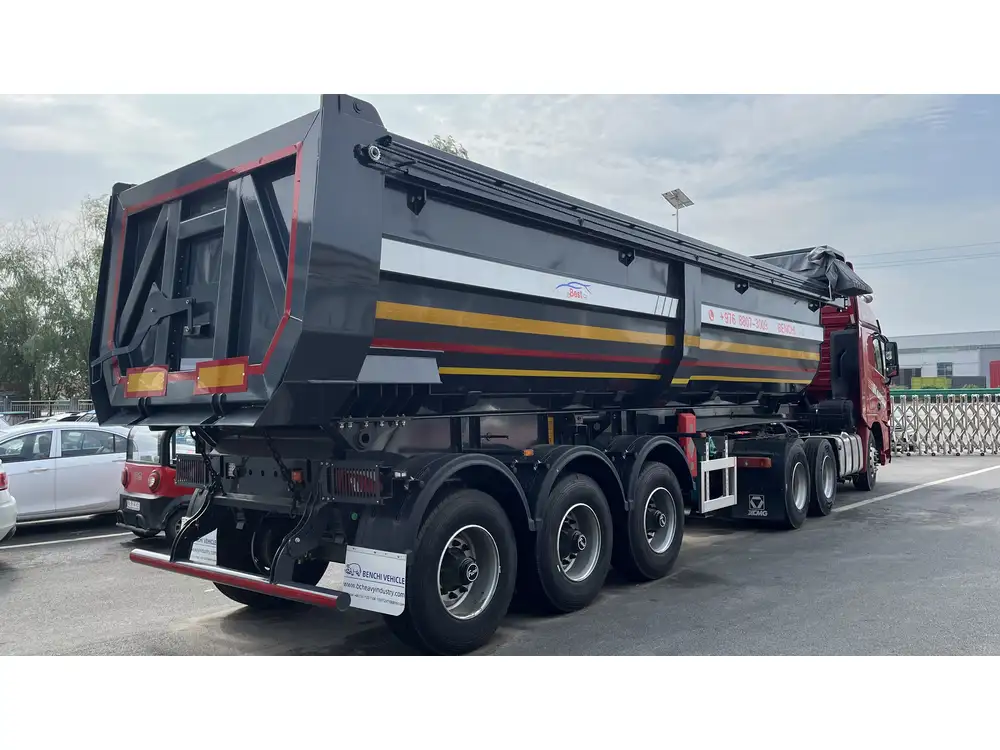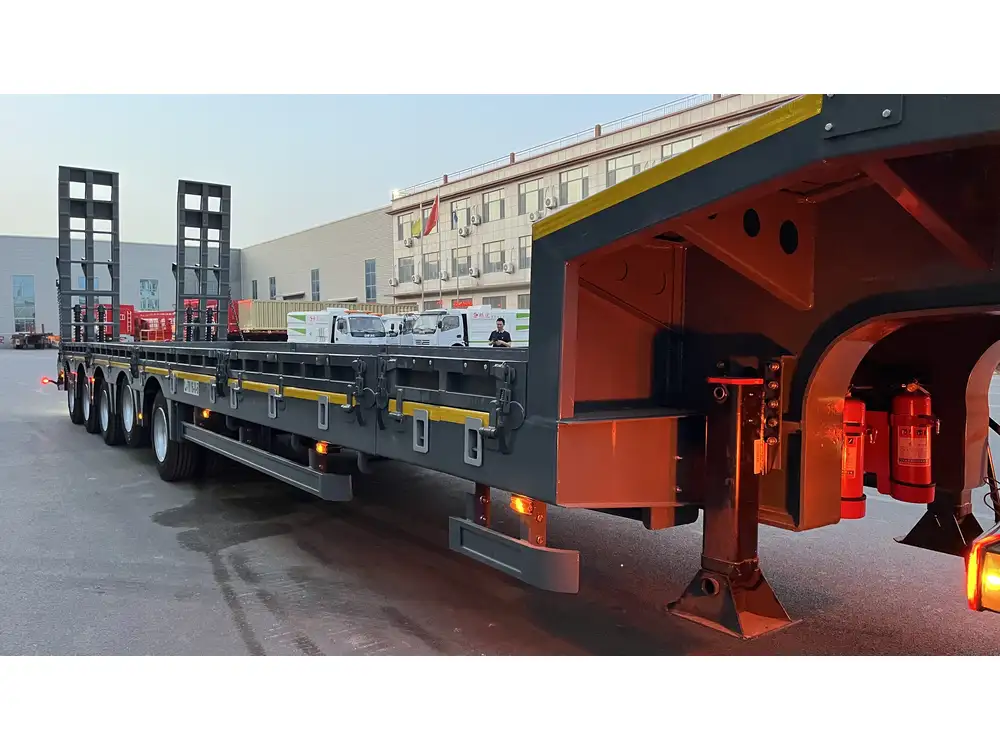Backing under a semi-trailer is an intricate ballet of precision, patience, and practice. It requires not only an understanding of the physics involved but also a keen awareness of spatial dimensions, trailer characteristics, and the operational environments in which one may find themselves. This guide delves into the nuances of this vital skill, equipping drivers with the tools necessary for efficient and safe trailer coupling.
Understanding Semi-Trailer Basics
Before we can even discuss the practicalities of backing up to a semi-trailer, it’s essential to understand its components and physics. Here’s a breakdown:
Key Components of a Semi-Trailer
| Component | Description |
|---|---|
| Kingpin | The pivotal point that connects the trailer to the tractor. Positioned at the front of the trailer. |
| Fifth Wheel | The device mounted on the tractor that engages the kingpin, facilitating weight distribution and connection. |
| Trailers | Vary in length, weight, and type (flatbed, reefer, dry van, etc.), affecting handling and driving strategies. |
| Jockey Wheel | A retractable wheel at the front of the trailer that aids in maneuverability when detached. |

Physics at Play
When backing under a semi-trailer, several physical forces come into play, including:
- Momentum: Understanding how speed affects your ability to control the tractor-trailer combo.
- Angle of Approach: The turning radius greatly impacts the effectiveness of aligning the tractor with the trailer.
- Weight Distribution: Knowing how your tractor’s weight affects performance—overloading can lead to handling difficulties.
Preparing for the Maneuver
Preparation is the cornerstone of any successful backing operation.
Pre-Backing Checklist
Before attempting to back under a semi-trailer, perform a thorough inspection and checklist to ensure everything is in order:
Vehicle Inspection:
- Ensure the tractor is in working order (brakes, lights, and signals).
- Check the coupling and safety mechanisms.
Environment Assessment:
- Look for potential obstacles (other vehicles, trailers, or natural barriers).
- Check for any incline or decline that could affect the trailer’s alignment.
Communication:
- Engage with a ground guide if necessary to enhance safety.

Mental Preparation
Backing under a semi-trailer requires a focused mindset. Consider mental rehearsals or visualization techniques to prepare for the operation ahead. Think about the mechanics of your movements, from steering angles to body positioning in the driver’s seat.
Perfecting The Backing Process
Having laid the groundwork, we can now delve into the practicalities of backing under a semi-trailer with clarity and precision.
Step-by-Step Backing Procedure
Align the Tractor:
- Begin by positioning your truck at a roughly 45-degree angle from the trailer. This angle allows for better visualization and clearance.
Check Mirrors:
- Engage the mirrors! They are your eyes during this process. Ensure both side mirrors are adjusted perfectly to minimize blind spots.
Initial Reverse:
- Put the vehicle in reverse. As you do so, gently turn the steering wheel in the direction you want the back of the trailer to go. Since the front of the tractor moves in the opposite direction of the rear, this control is crucial.
Monitor the Angle:
- Keep an eye on the trailer’s alignment in relation to the tractor’s cab. Adjust steering inputs to maintain alignment; minor adjustments may be all that is needed.
Watch for Obstacles:
- Ensuring that there are no unexpected elements in your path is crucial. Your mirrors will help detect immediate danger.
Final Alignment:
- As the kingpin approaches the fifth wheel, align it accurately to allow smooth coupling. A good practice is to aim for the center of the fifth wheel.
Complete the Coupling:
- Once aligned, slowly drive forward, allowing the kingpin to engage with the fifth wheel. Listen for the lock mechanism and check the indicator.
Conduct Final Checks:
- After coupling, back up slightly to confirm the coupling is secure. Conduct the safety check – gauge if the locking mechanism is engaged.

Common Pitfalls to Avoid
The road to mastering semi-trailer backing is fraught with challenges. Here are a few common pitfalls to steer clear of:
| Pitfall | Description |
|---|---|
| Overturning the Steering | This can lead to the trailer swinging out wildly, creating a dangerous situation. |
| Lack of Patience | Rushing through the process can lead to costly errors or accidents. |
| Neglecting Mirror Use | Mirrors are essential; failing to utilize them is a significant safety risk. |
| Ignoring Environment | Failing to assess surroundings increases the risk of colliding with other vehicles or obstacles. |
Practical Exercises
Theoretical knowledge can only take you so far. It is imperative to translate this knowledge into practice. Here are some effective exercises designed to enhance your backing proficiency:
Exercise 1: Straight Line Backing
- Find a spacious area, such as a truck yard.
- Set up cones to mark a path, and practice backing straight in a controlled environment.
- Time how long it takes to back the distance and try to reduce your time while maintaining accuracy.

Exercise 2: Docking Practice
- Simulate reversing into a loading dock scenario, which introduces a more realistic setting.
- Use markers to simulate the dock’s edges, and practice making precise maneuvers to access the dock correctly.
Exercise 3: Simulation Tools
- Utilize trailer backing simulators, which can closely replicate real-world conditions without the risk of accidents.
- These tools can provide instant feedback, allowing for a rapid learning curve.
Safety Best Practices
Safety is paramount when operating a semi-trailer. Here’s an extensive list of best practices:
Use a Ground Guide: If possible, enlist someone to serve as a spotter. They can help maneuver the trailer safely.
Ensure Adequate Lighting: Execute backing maneuvers in well-lit conditions to enhance visibility.
Practice Defensive Driving: Always be cognizant of your surroundings, anticipating the actions of others around you on the road.
Stay Calm: If you feel rushed or anxious while backing, it’s acceptable to stop and reassess your approach.
Regular Training: Engaging in periodic training sessions can help maintain your skills and keep them sharp.

Conclusion: Ensuring Successful Backing Under a Semi-Trailer
Mastering the art of backing under a semi-trailer is a combination of knowledge, practice, and adherence to safety protocols. By comprehensively understanding the mechanics, preparing thoroughly, and practicing regularly, anyone can enhance their skills in this nuanced yet essential area of trucking.
Summary of Key Takeaways
- Preparation is Key: Conduct inspections and assessments before backing.
- Utilize Mirrors: Keep vigilant watch through mirrors to avoid accidents.
- Practice Regularly: Utilize structured exercises and simulations to refine your skills.
- Safety First: Always prioritize safety measures in every maneuver.
By embedding these principles into your routine, you can ensure successful backing operations that maintain safety and efficiency, contributing positively to the entire transportation process. The path to mastery is paved with diligence, patience, and continuous training.



